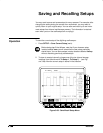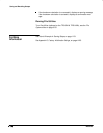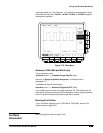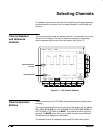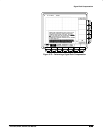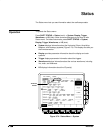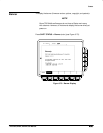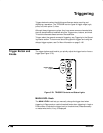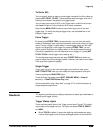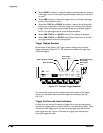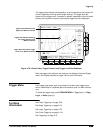
Reference
Signal Path Compensation
This oscilloscope lets you compensate the internal signal path used to acquire
the waveforms you acquire and measure. By executing the signal path com-
pensation feature (SPC), you can optimize the oscilloscope capability to make
accurate measurements based on the ambient temperature.
Run an SPC anytime you wish to ensure that the measurements you make
are made with the most accuracy possible. You should also run an SPC if the
temperature has changed more than 5 C since the last SPC was performed.
NOTE
When making measurements at volts/division settings less than or
equal to 5 mV, you should run SPC at least once per week. Failure
to do so may result in the oscilloscope not meeting warranted
performance levels at those volts/div settings. (Warranted charac-
teristics are listed in the Performance Verification manual.)
1. Power on the digitizing oscilloscope and allow a 20 minute warm-up
before doing this procedure.
2. Disconnect any input signals you may have connected from all four input
channels.
When doing steps 3 and 4, do not turn off the oscilloscope until
signal-path compensation completes. If you interrupt (or lose) power
to the instrument while signal-path compensation is running, a mes-
sage is logged in the oscilloscope error log. If such a case occurs,
rerun signal-path compensation.
3. Press SHIFT UTILITY ➞ System (main) ➞ Cal (pop-up) ➞ Signal
Path (main) ➞ OK Compensate Signal Paths (side).
4. Wait for signal path compensation to complete (one to three minutes).
While it progresses, a “clock” icon (shown at left) is displayed on-screen.
When compensation completes, the status message will be updated to
Pass
or
Fail
in the main menu.
5. Verify the word
Pass
appears under Signal Path in the main menu. (See
Figure 3-73.)
Operation



